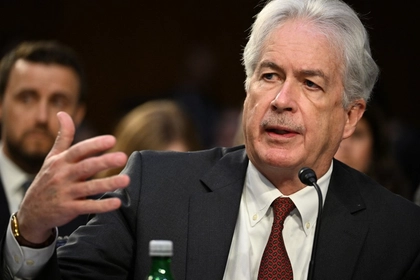In mid-2023, faced with the ever-growing threat from Ukraine’s first-person view (FPV) kamikaze drones, Russian tanks and armored personal carriers (APCs) began being fitted with so-called “cope cages” aimed at limiting the impact of attack.
Initially these took the form of improvised crude grills, frames and screens to protect their turrets and other vulnerable parts. Over time, the cages became bigger, eventually covering most of the vehicle, with reports that anti-drone grills were being fitted to newly built tanks and APCs in the factory. They also started to appear on Israeli tanks moving against Hamas in Gaza.
JOIN US ON TELEGRAM
Follow our coverage of the war on the @Kyivpost_official.
In early April this year, Russian troops, seemingly concerned that their improvised and even factory-fitted grills weren’t providing adequate protection, began supplementing their cages with armored boxes covering the whole tank and improvised electronic jammers intended to provide further protection from drone strikes.
The boxes were made from a variety of materials including “wriggly tin” roof paneling and plywood sheets. They were quickly dubbed “turtle tanks.”
The concept caught on and the “turtle shells” became more intricate and extensive. Often, they restricted and, in at least one case, completely blocked the movement of a tank’s main armament and limited the ability of the crew to observe the battlefield other than straight ahead.

ISW Russian Offensive Campaign Assessment, December, 21, 2024
Russian milblogger Zvezdanews posted a video on Telegram on Aug. 21 showing what is described as the “king of barbecues” and what the military issues website Military Recognition.com called a Super Turtle Tank.
According to Zvezdanews, the super turtle is a T-80 main battle tank (MBT) already fitted with a cope cage, to which a second protective box has been added covering the whole vehicle. The box is made from solid 8-millimeter (0.3-inch) thick steel sheets with slat grills front and rear, ostensibly to allow ventilation and cooling air to pass through.
The box is so large that there is room to stand up inside and it has a fold-down bed to allow crew members to rest in between combat missions.
A tank commander identified by his call sign “Mikhey” is evidently proud of his creation saying: “It all holds together tightly, works perfectly. No matter how much we ride, nothing comes loose or falls apart.”
Mikhey admits that visibility, mobility and the ability to use the 125mm main armament has been restricted by the modifications. But he says that it is just what is needed for assault operations when the aim is to break through the Ukrainian line of defense, where the main threat is anti-tank minefields and FPV drones.

Whether this is actually intended to be used on the battlefield is questionable and if it is, just how long it would actually survive.
The threat from FPV drones is such that many armies are now fitting anti-drone measures to their armored vehicles, though none have done so with as much enthusiasm as the Russian defense industry. Nearly every new tank and armored vehicle on display at this month’s Moscow “Army-2024”International Military-Technical Forum were covered in anti-drone armored cages, boxes and nets as well as portable counter-drone jamming systems, to protect them from kamikaze drones and loitering munitions.
You can also highlight the text and press Ctrl + Enter






